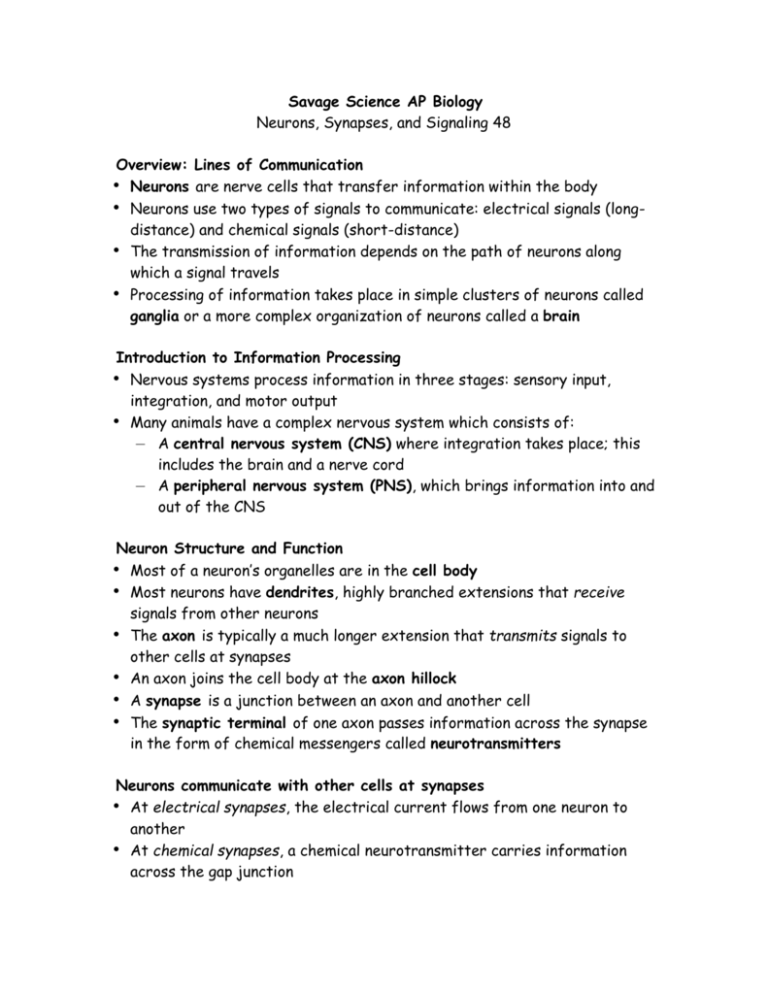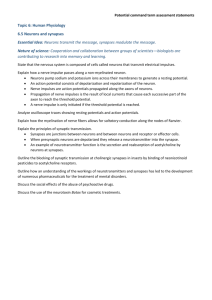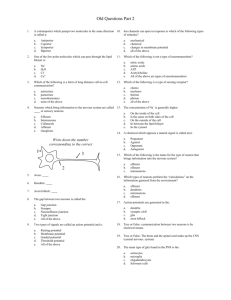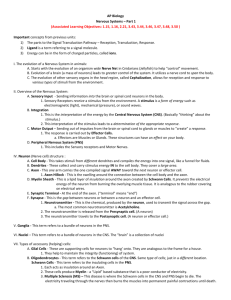Neurons, Synapses, Signaling: AP Biology Lecture Notes
advertisement

Savage Science AP Biology Neurons, Synapses, and Signaling 48 Overview: Lines of Communication • Neurons are nerve cells that transfer information within the body • Neurons use two types of signals to communicate: electrical signals (longdistance) and chemical signals (short-distance) • The transmission of information depends on the path of neurons along which a signal travels • Processing of information takes place in simple clusters of neurons called ganglia or a more complex organization of neurons called a brain Introduction to Information Processing • Nervous systems process information in three stages: sensory input, integration, and motor output • Many animals have a complex nervous system which consists of: – A central nervous system (CNS) where integration takes place; this includes the brain and a nerve cord – A peripheral nervous system (PNS), which brings information into and out of the CNS Neuron Structure and Function • Most of a neuron’s organelles are in the cell body • Most neurons have dendrites, highly branched extensions that receive signals from other neurons • The axon is typically a much longer extension that transmits signals to other cells at synapses • An axon joins the cell body at the axon hillock • A synapse is a junction between an axon and another cell • The synaptic terminal of one axon passes information across the synapse in the form of chemical messengers called neurotransmitters Neurons communicate with other cells at synapses • At electrical synapses, the electrical current flows from one neuron to another • At chemical synapses, a chemical neurotransmitter carries information across the gap junction • Most synapses are chemical synapses Acetylcholine • Acetylcholine is a common neurotransmitter in vertebrates and invertebrates • In vertebrates it is usually an excitatory transmitter











